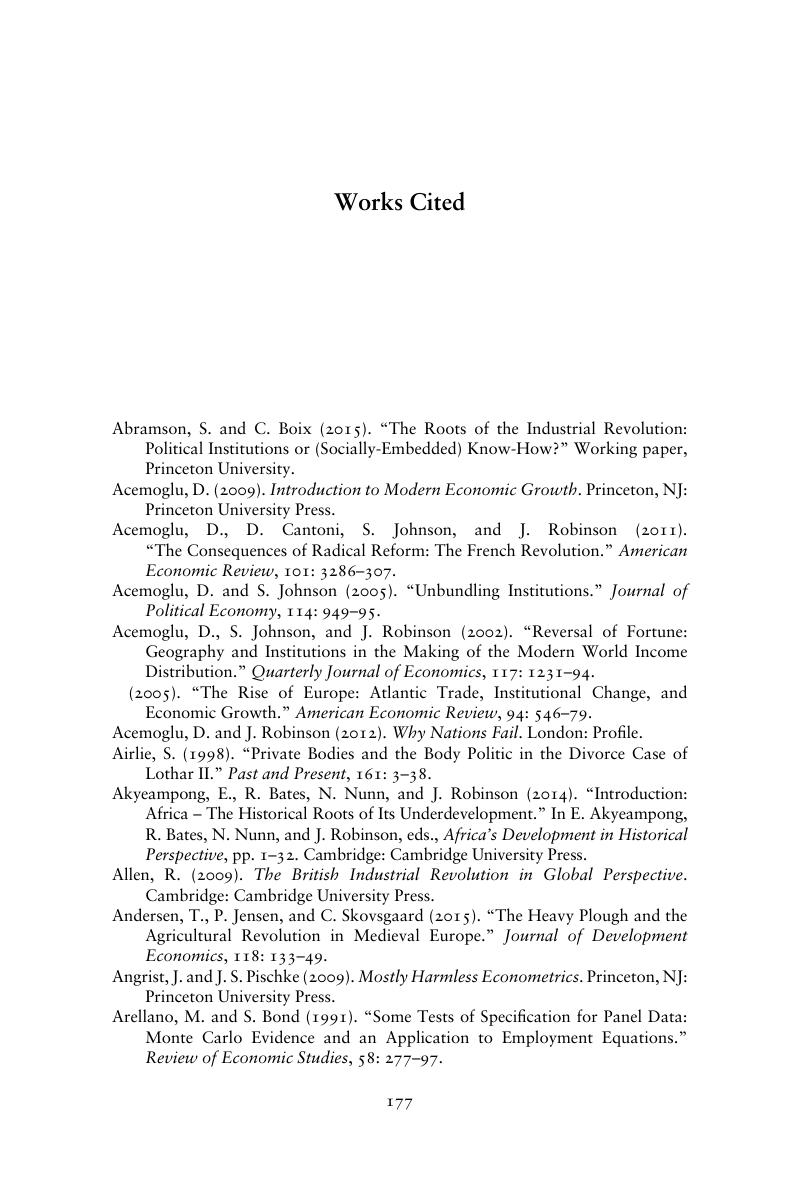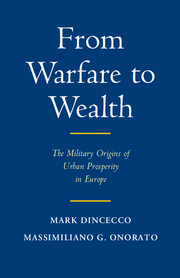Book contents
- From Warfare to Wealth
- Political Economy of Institutions and Decisions
- From Warfare to Wealth
- Copyright page
- Contents
- Figures
- Tables
- Acknowledgments
- 1 Introduction
- 2 The Importance of Warfare
- 3 Europe’s Urban Rise
- 4 Evaluating the Safe Harbor Effect
- 5 Evaluating the Warfare-to-Wealth Effect
- 6 Warfare to Wealth in Comparative Perspective
- Epilogue
- Book part
- Notes
- Works Cited
- Index
- (continued from page ii)
- References
Works Cited
Published online by Cambridge University Press: 28 December 2017
- From Warfare to Wealth
- Political Economy of Institutions and Decisions
- From Warfare to Wealth
- Copyright page
- Contents
- Figures
- Tables
- Acknowledgments
- 1 Introduction
- 2 The Importance of Warfare
- 3 Europe’s Urban Rise
- 4 Evaluating the Safe Harbor Effect
- 5 Evaluating the Warfare-to-Wealth Effect
- 6 Warfare to Wealth in Comparative Perspective
- Epilogue
- Book part
- Notes
- Works Cited
- Index
- (continued from page ii)
- References
Summary

- Type
- Chapter
- Information
- From Warfare to WealthThe Military Origins of Urban Prosperity in Europe, pp. 177 - 187Publisher: Cambridge University PressPrint publication year: 2017



